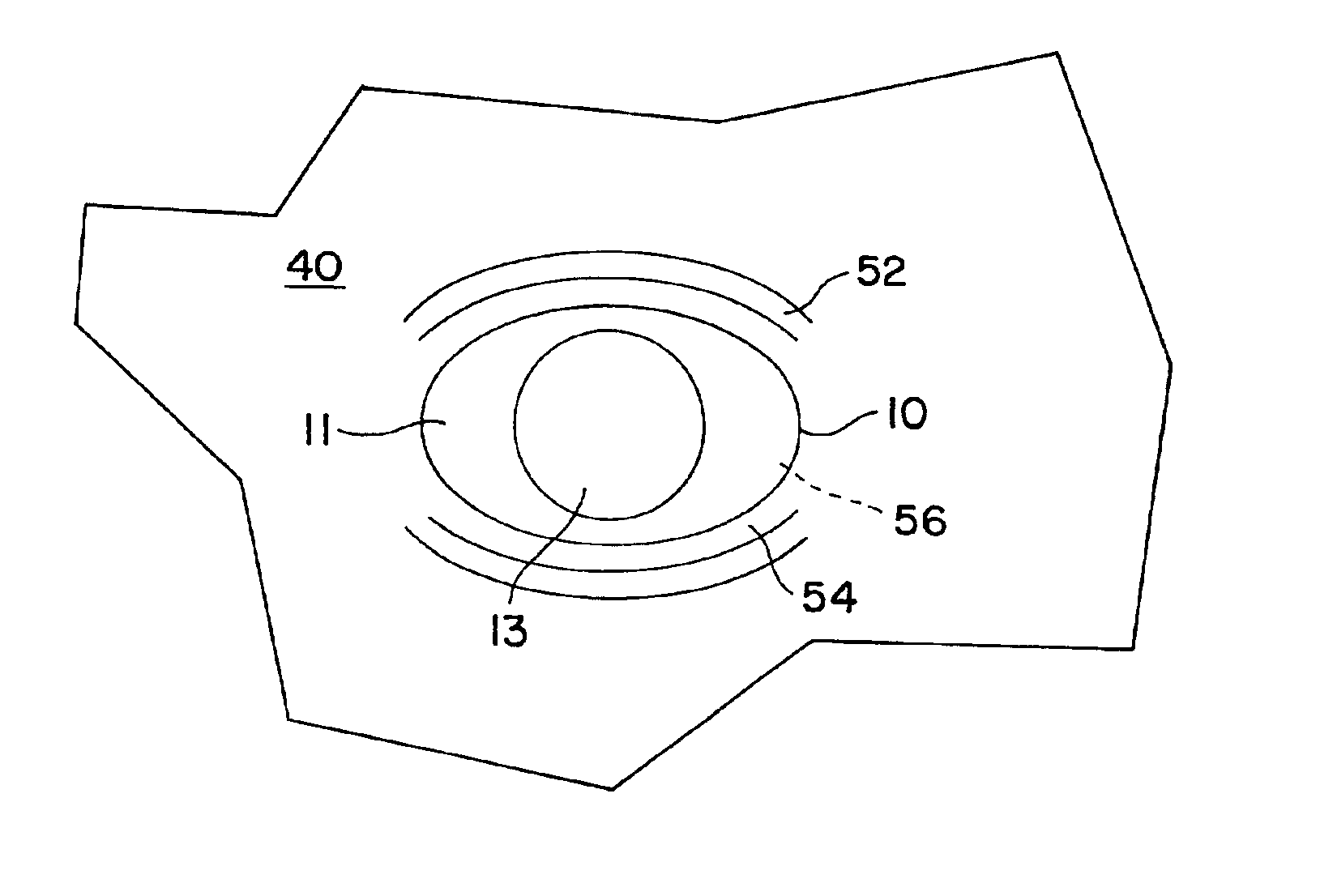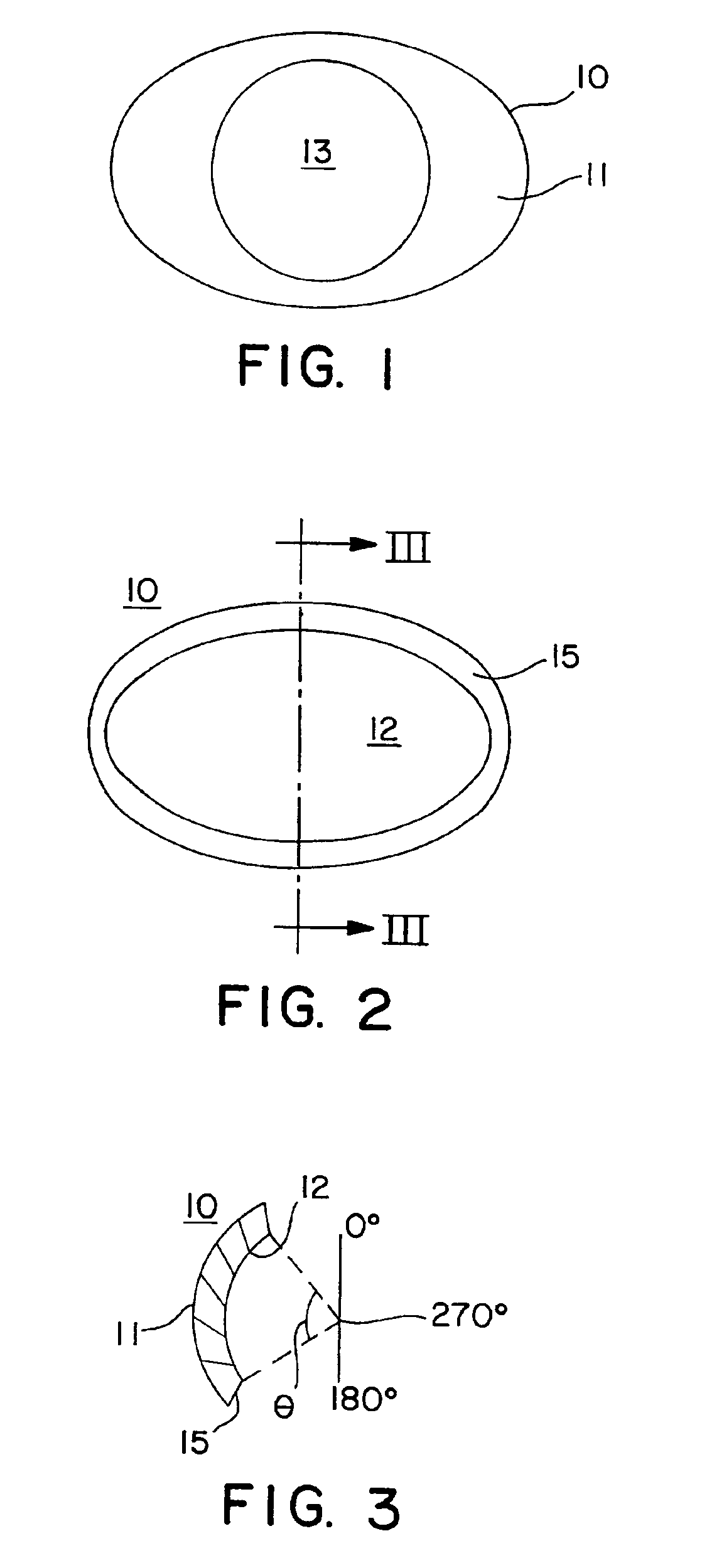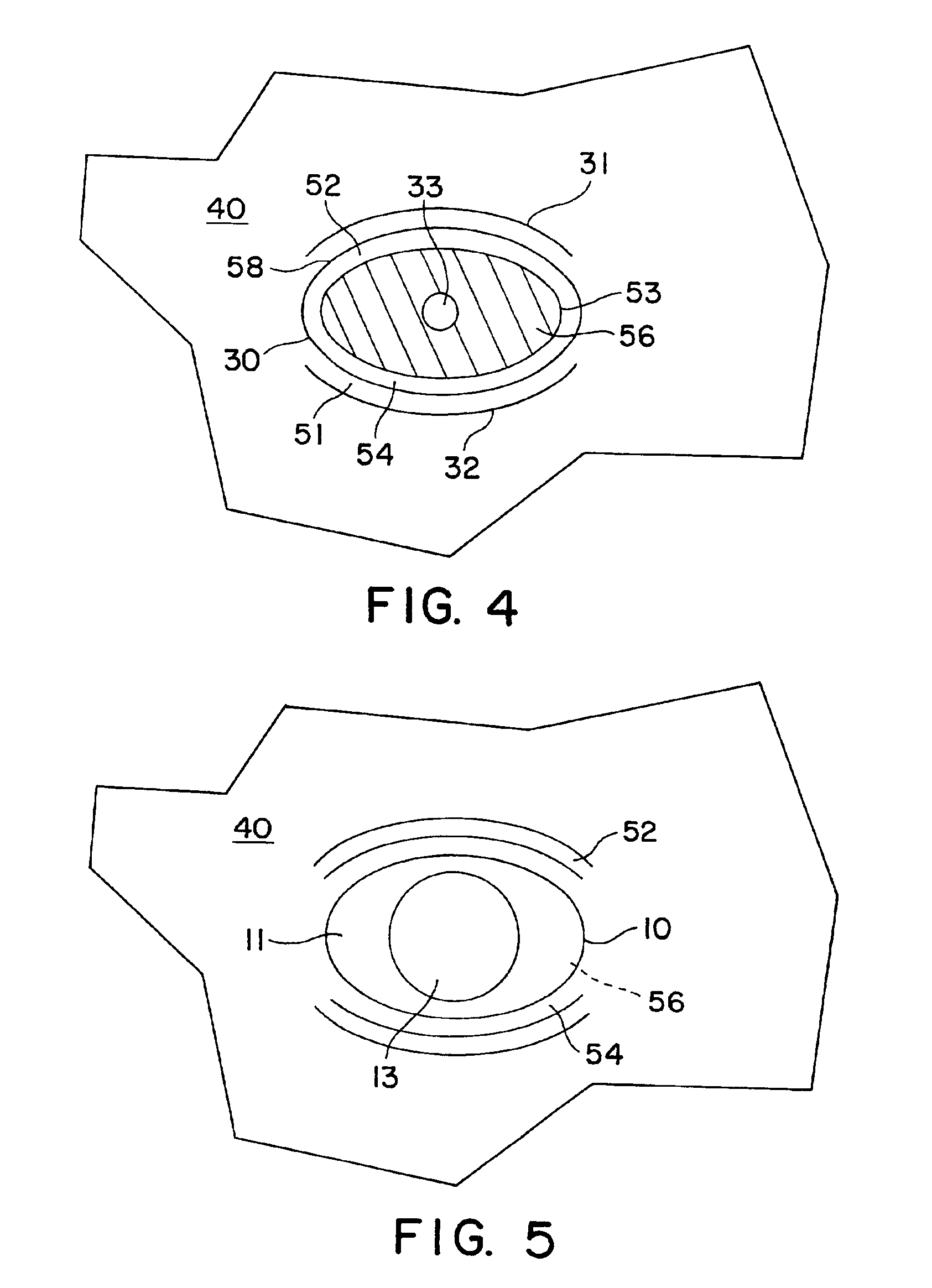Manikin and eye device apparatus, methods and articles of manufacture
a technology of eye device and manikin, which is applied in the field of manikin and eye device apparatus, can solve the problems of adding complications to the sculpting process, difficult eye construction and placement, and difficult construction of life-like and realistic sculptures, etc., and achieves the effect of accurate, consistent and efficient installation of artificial eyes
- Summary
- Abstract
- Description
- Claims
- Application Information
AI Technical Summary
Benefits of technology
Problems solved by technology
Method used
Image
Examples
Embodiment Construction
[0034]Reference is now made to the accompanying Figures for the purpose of describing, in detail, preferred embodiments of the present invention. Like elements have the same numbers throughout the several views, for example, with reference to artificial eyepiece 10, pupil 13, and eye mounting area 40 on the taxidermy manikin. The detailed description accompanying each Figure is not intended to limit the scope of the claims appended hereto.
[0035]FIG. 1 depicts a preferred embodiment of an artificial eye 10. The curved front surface 11 of the eye is generally visible when installed on a manikin. The pupil 13, although present in this view, may or may not be present in any particular embodiment; that is, the user may prefer to add a pupil (and / or any other coloration) later in the process. As a result, in such an embodiment, the artificial eye would not have a pupil in its original preparation.
[0036]It should be noted that in the various embodiments of the present invention, the eye 10...
PUM
| Property | Measurement | Unit |
|---|---|---|
| Shape | aaaaa | aaaaa |
| Area | aaaaa | aaaaa |
| Circumference | aaaaa | aaaaa |
Abstract
Description
Claims
Application Information
 Login to View More
Login to View More - R&D
- Intellectual Property
- Life Sciences
- Materials
- Tech Scout
- Unparalleled Data Quality
- Higher Quality Content
- 60% Fewer Hallucinations
Browse by: Latest US Patents, China's latest patents, Technical Efficacy Thesaurus, Application Domain, Technology Topic, Popular Technical Reports.
© 2025 PatSnap. All rights reserved.Legal|Privacy policy|Modern Slavery Act Transparency Statement|Sitemap|About US| Contact US: help@patsnap.com



